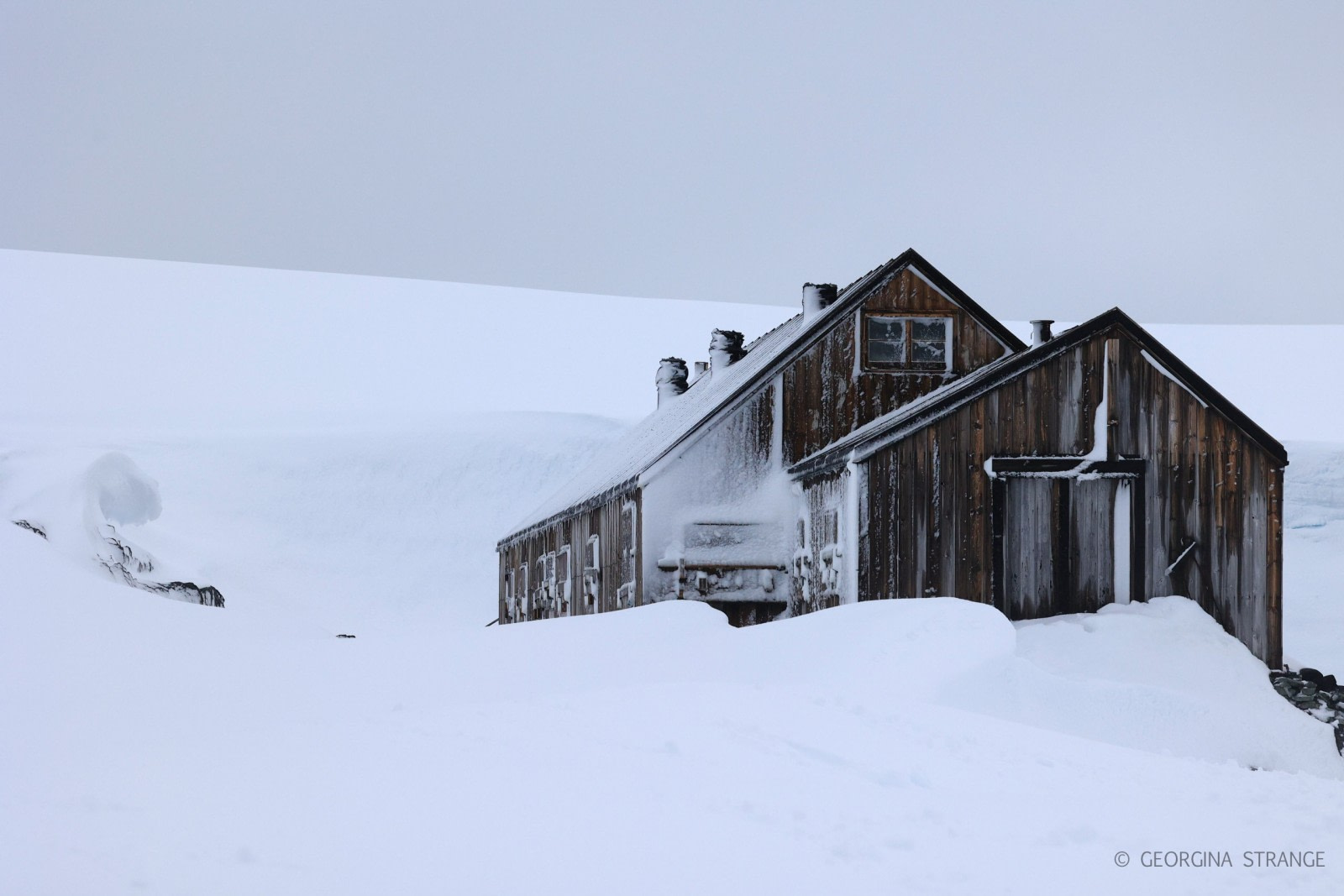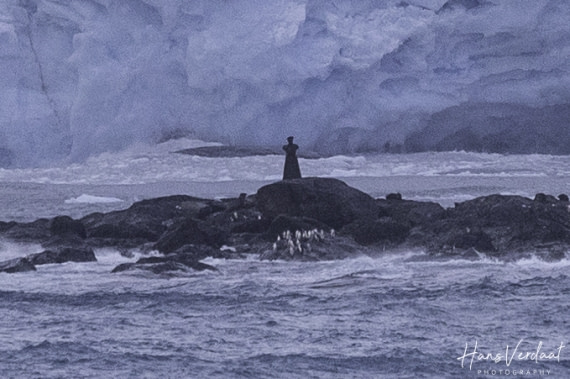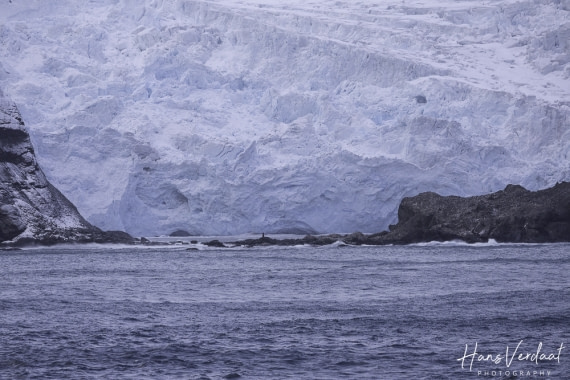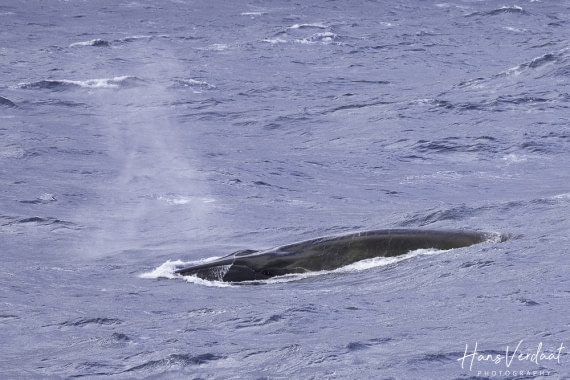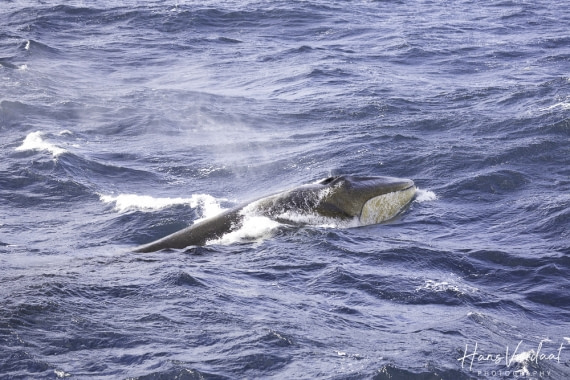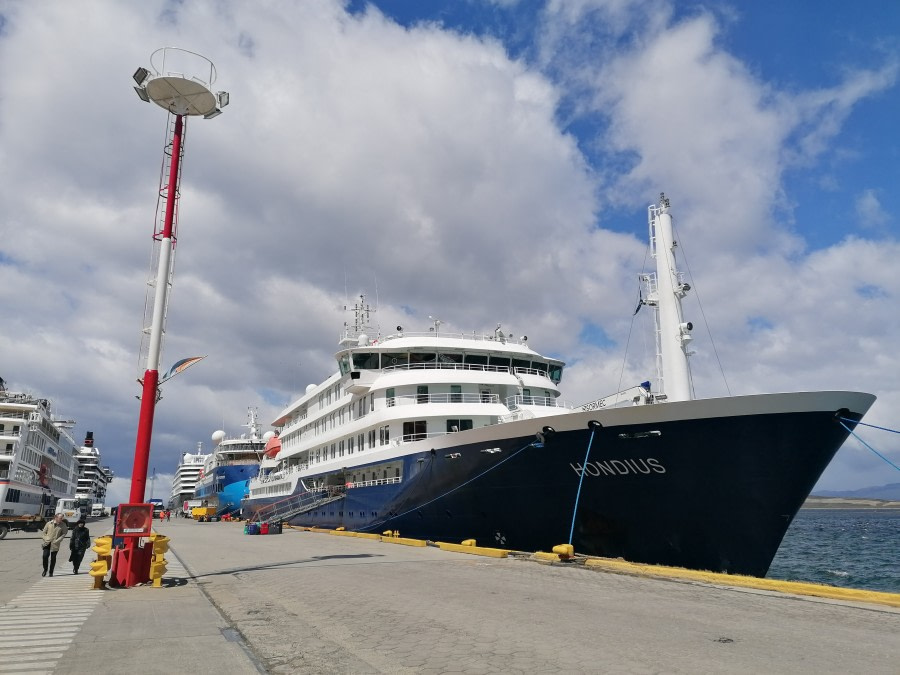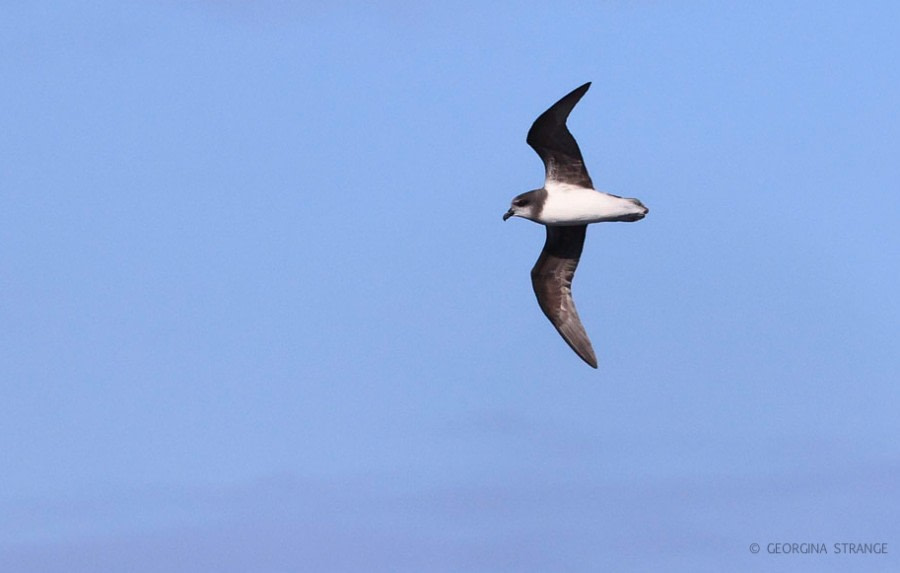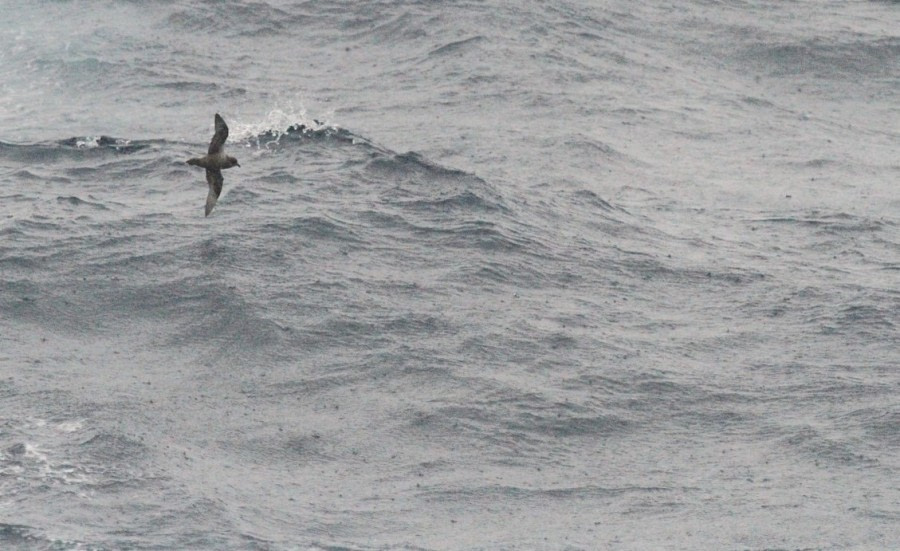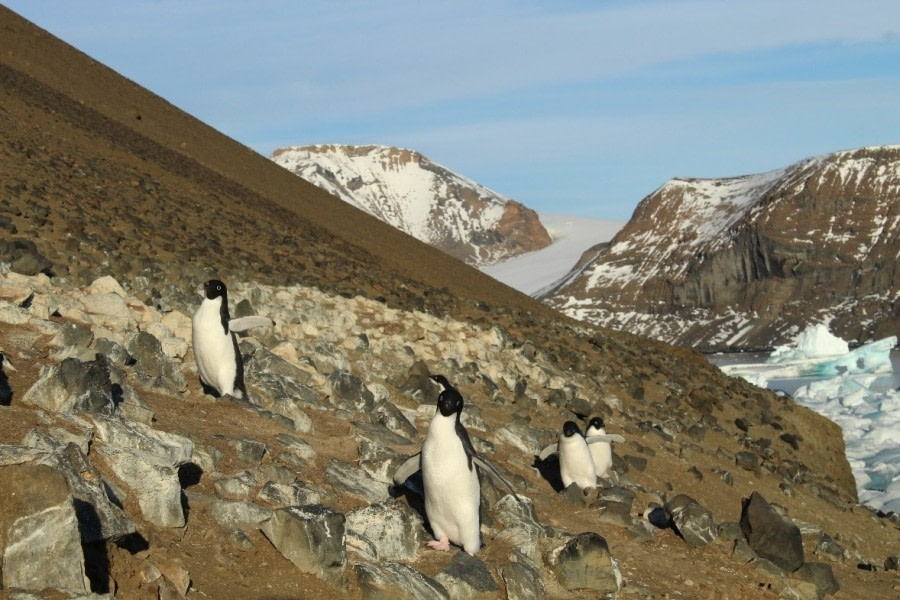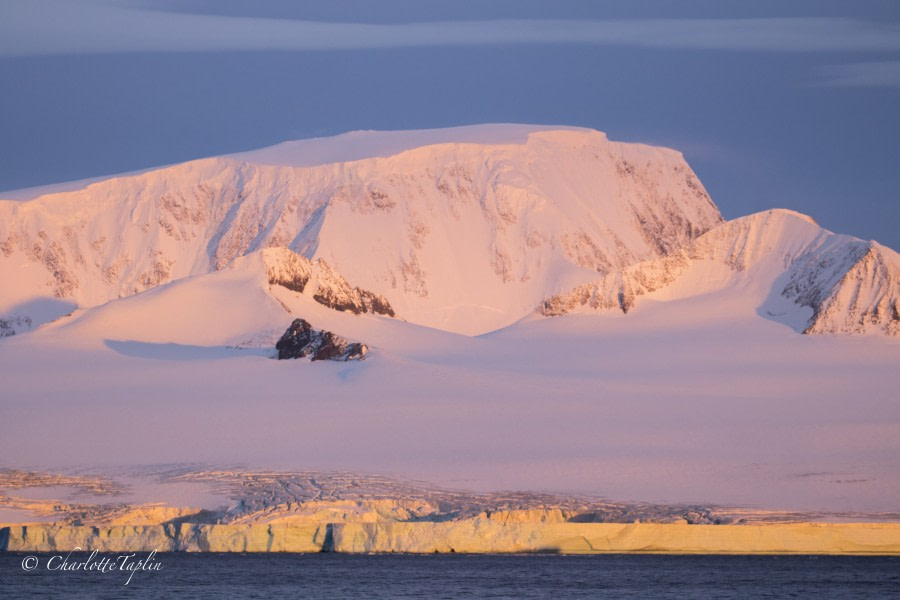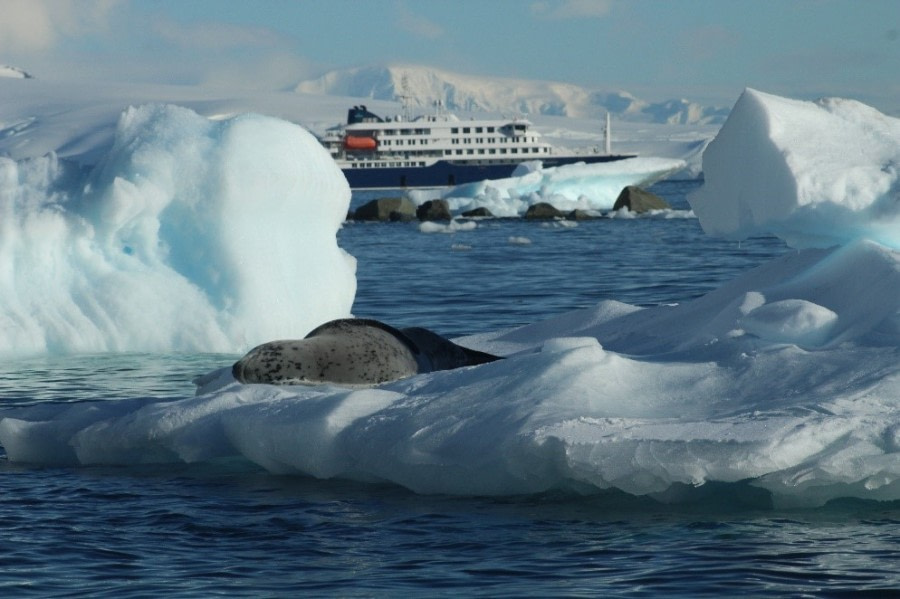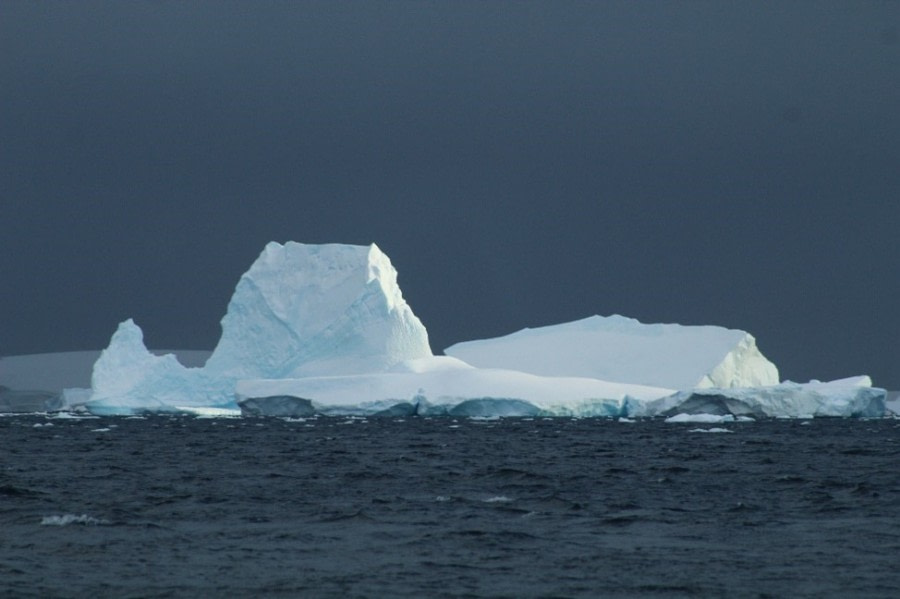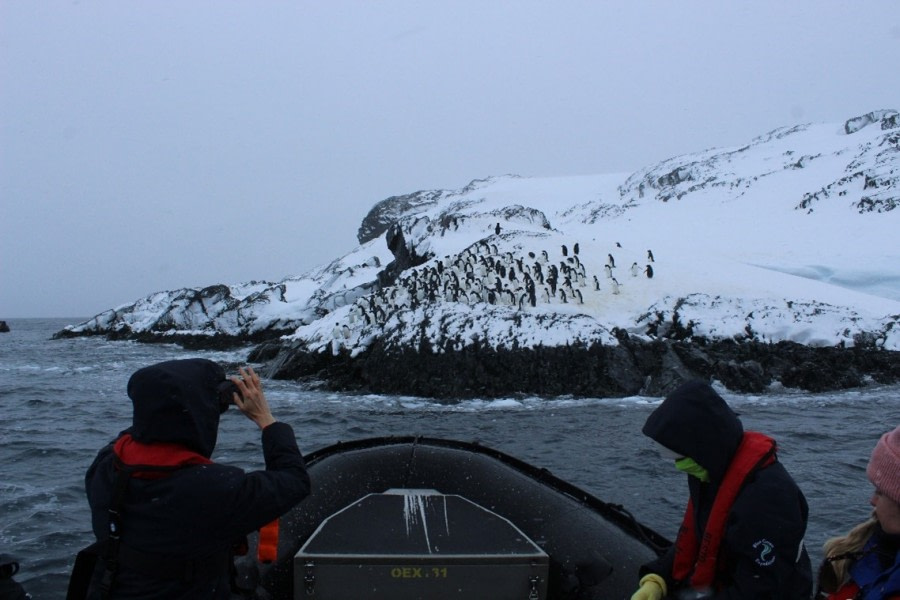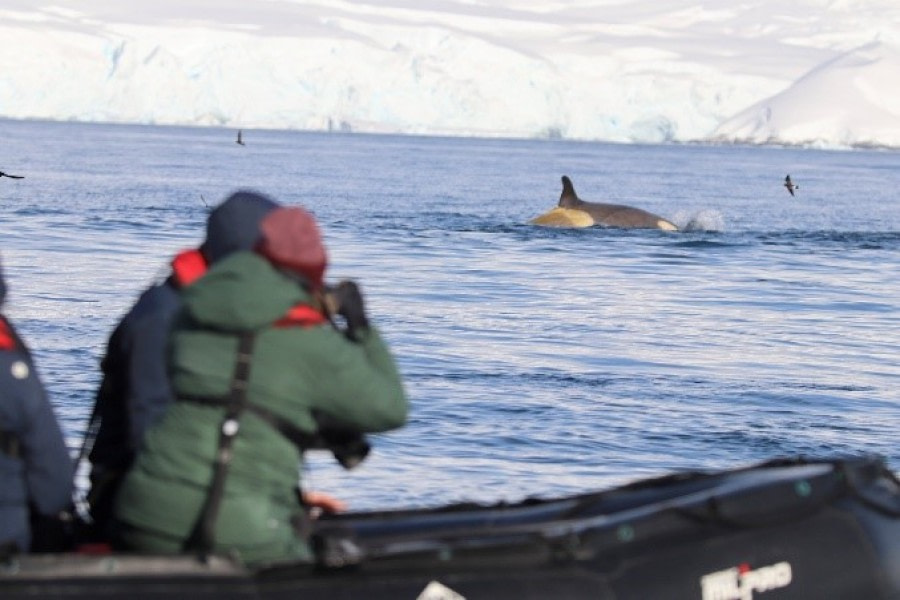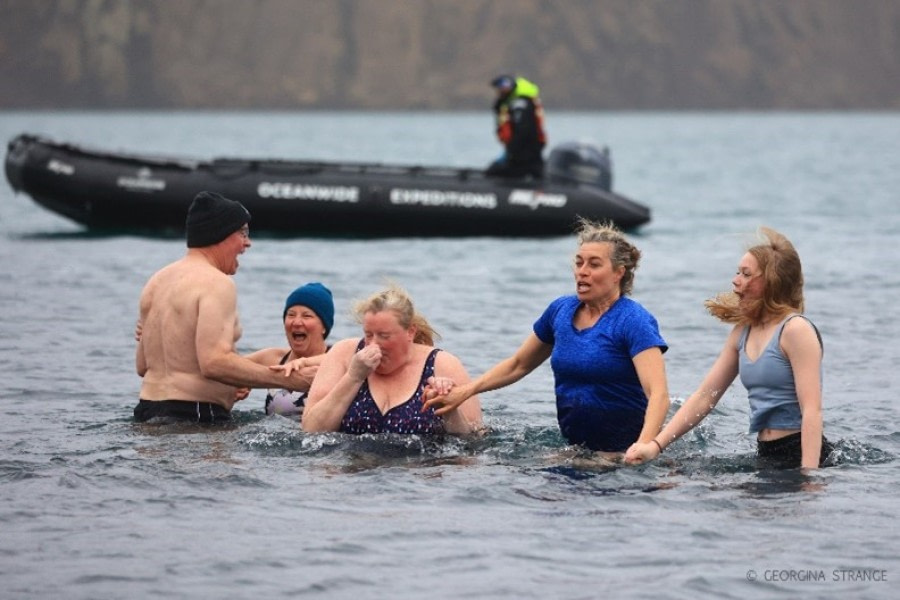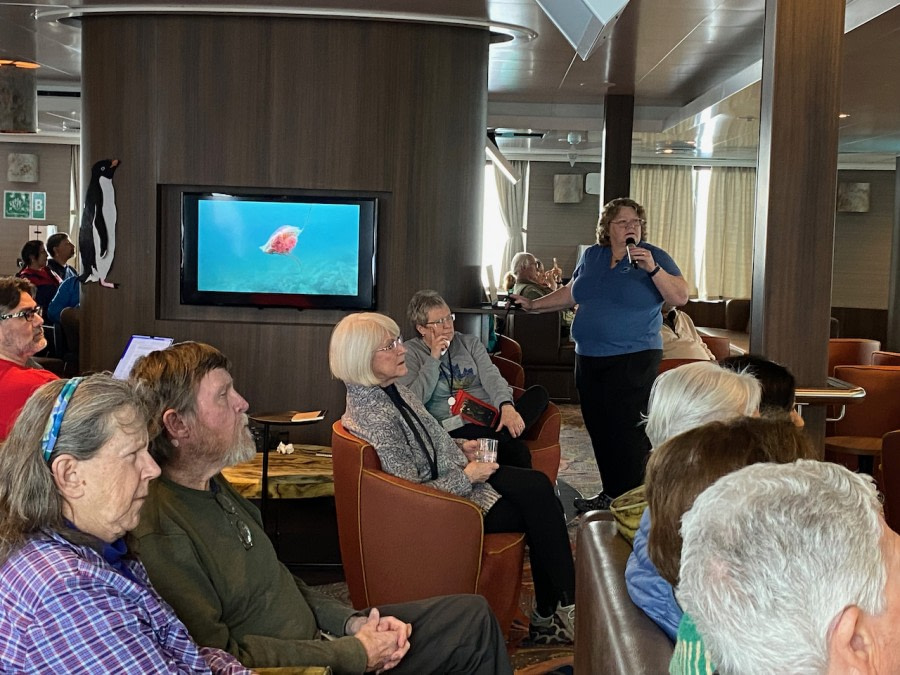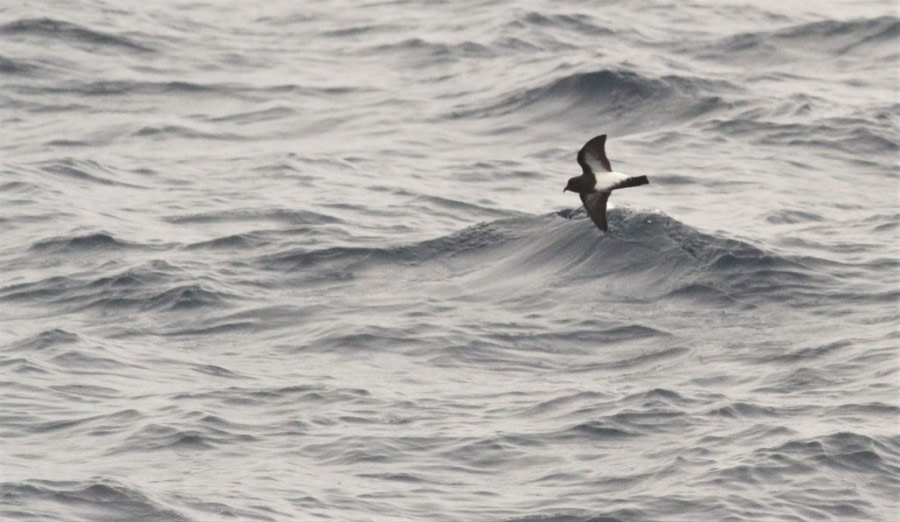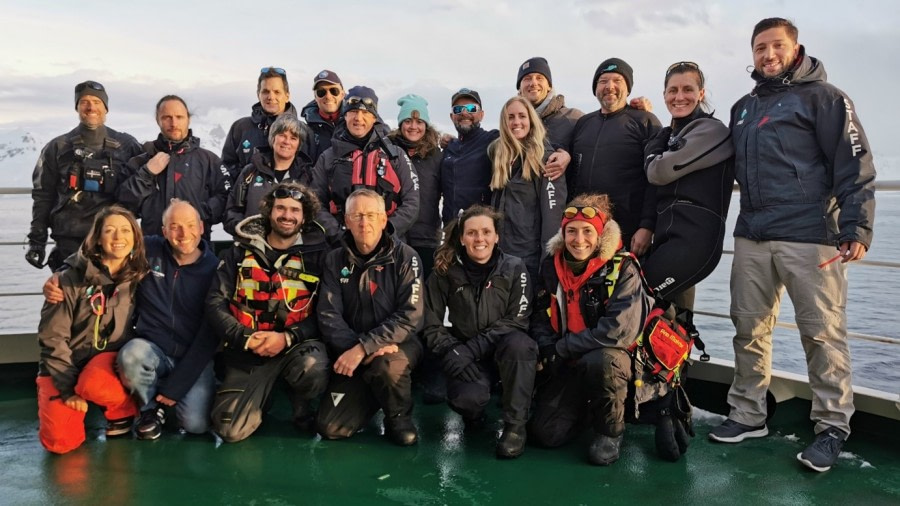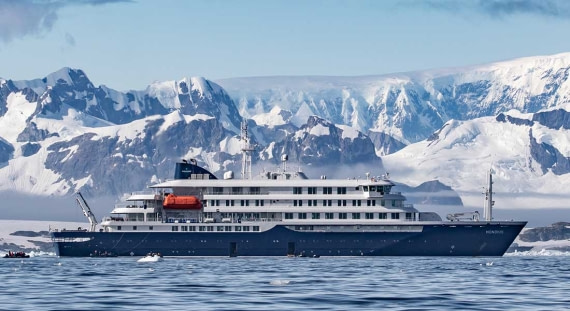| Date: | 14.03.2023 |
| Position: | 54°55.3’S 067°29.4’W |
| Wind: | Var 1 |
| Weather: | Rain |
| Air Temperature: | +3 |
Finally. Finally, we’re here, finally we’re getting on board, finally we’re going to Antarctica! Some of us have been waiting for years, and for some of us this is a life’s dream coming true. We find ourselves in the port of Ushuaia, the southernmost city of the world. On all the signs and souvenirs, Ushuaia is advertised as “the end of the world”. And to some extent this is true. For we are heading across the Drake Passage into a different world. A world that is unlike anything we have seen so far.
We are stepping on board the M/V Hondius, our beautiful 107-meter vessel that will be our base for the coming two weeks. The team on board welcomes us with open smiles and many of us can’t hide their excitement anymore. We get set up in our cabins and are then invited to the lounge for coffee, tea, home-made cakes and a mandatory safety briefing and drill. Chief Officer Diederik explains the most essential safety features on board and how we should behave in case of emergency. For the abandon ship drill, we all put on our funny looking orange life vests and gather at our muster stations from where we are directed to our life boats.
We leave the safe harbor of Ushuaia around 6pm. Half an hour later we are invited to the lounge for Captain’s Cocktail to celebrate the beginning of our voyage into the wilderness. The speech of our Captain Artur is accompanied by prosecco and tasty canapés. Afterwards we get to know our Hotel Manager Will and the Expedition Team. Outside the windows we gaze at the stunning landscape along the Beagle Channel that is accompanied by blowing humpback whales and jumping dusky dolphins. We end the day with a delicious dinner buffet, a stunning sunset and a relaxing glass by the bar.
Antarctica, here we come…
